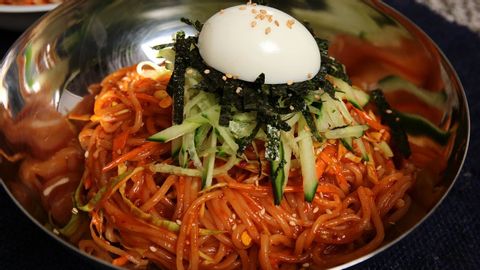
Subtitles & vocabulary
Spicy Chewy Noodles (Jjolmyeon: 쫄면)
00
林宜悉 posted on 2020/03/26Save
Video vocabulary
stuff
US /stʌf/
・
UK /stʌf/
- Uncountable Noun
- Generic description for things, materials, objects
- Transitive Verb
- To push material inside something, with force
B1
More grocery
US /'ɡroʊsərɪ/
・
UK /'ɡrəʊsərɪ/
- Uncountable Noun
- Daily foods such as flour, sugar, and tinned foods
- Countable Noun
- A store that sells food and household supplies.
B2TOEIC
More flip
US /flɪp/
・
UK /flɪp/
- Verb (Transitive/Intransitive)
- To turn your body in the air, as in gymnastics
- To move into a different position quickly
- Noun
- Act of turning your body in the air; somersault
- Movement of something from one position to another
B2
More recipe
US /ˈrɛsəˌpi/
・
UK /'resəpɪ/
- Noun
- Conditions likely to create a particular result
- Directions for making a dish, with the ingredients
B1
More Use Energy
Unlock All Vocabulary
Unlock pronunciation, explanations, and filters
